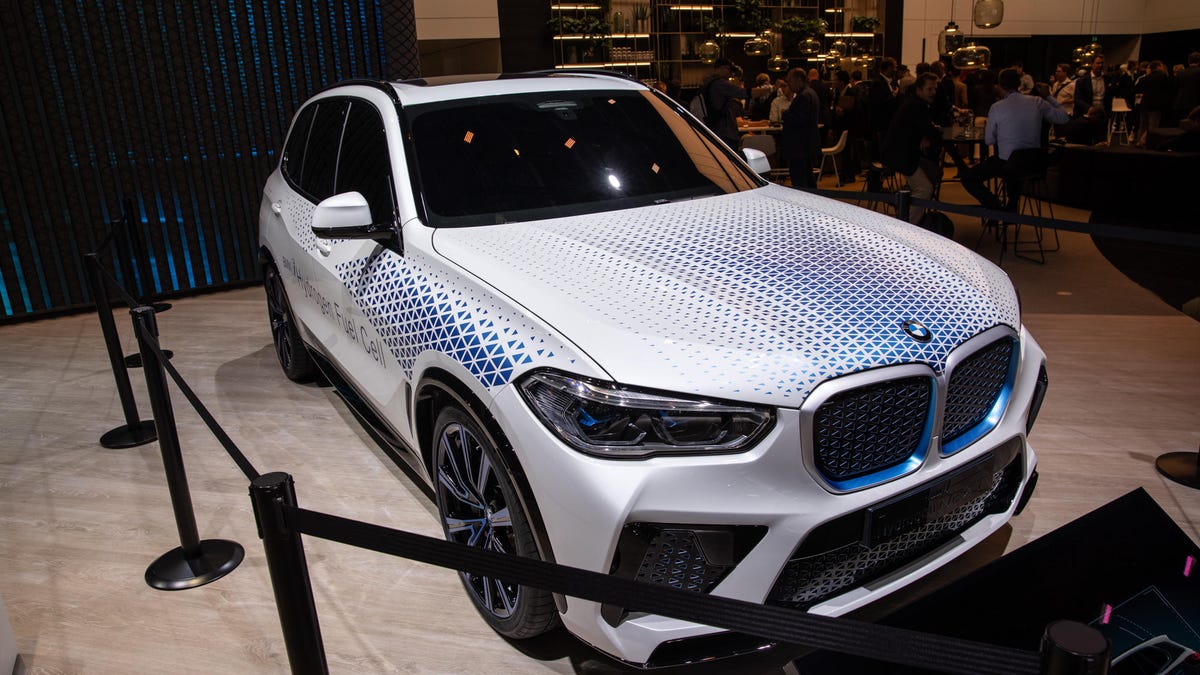BMW i Hydrogen Next looks at alternate methods of electrification
In this instance, a hydrogen fuel-cell powertrain has been shoehorned into a modern X5.
A battery-electric powertrain is a good solution, but it's not the only one. BMW is looking at multiple methods of electrification that can live alongside one another, and its latest development vehicle shows that they can all work together in harmony.
BMW on Tuesday unveiled the i Hydrogen Next fuel cell development vehicle. Based on the current-gen X5 SUV, this vehicle previews the automaker's future efforts in hydrogen power, the next iteration of which will debut in 2022. BMW hopes to have fuel cell vehicles on sale by 2025, but as it notes in its press release, "the timing very much depends on market requirements and overall conditions."
BMW made a few key modifications to the X5's exterior to help it stand apart from other, more traditionally powered X5s. The body is covered in a blue triangle livery, with that color extending to the grilles, headlights, wheels and rear diffuser. Speaking of the rear diffuser, those blue elements replace the tailpipes, seeing as how there's no internal combustion engine. That's about it, really. It's just a regular ol' X5 otherwise.
The automaker used its press release to tout some of hydrogen's benefits. Its refilling times are similar to that of a gasoline car, which means it's a fair bit faster than your average modern EV. The range is dictated by the size of the tank, and the powertrain itself isn't really affected by the climate. The only trouble, as BMW notes, is the severe lack of infrastructure in most parts of the world, although some are under development.
This isn't exactly BMW's first foray into hydrogen. The automaker teamed up with Toyota back in 2013 to develop a powertrain using compressed hydrogen gas. BMW has been using that JV drive system in a fleet of 5 Series Gran Turismo vehicles, and the two companies are still working together to further develop the technology.


